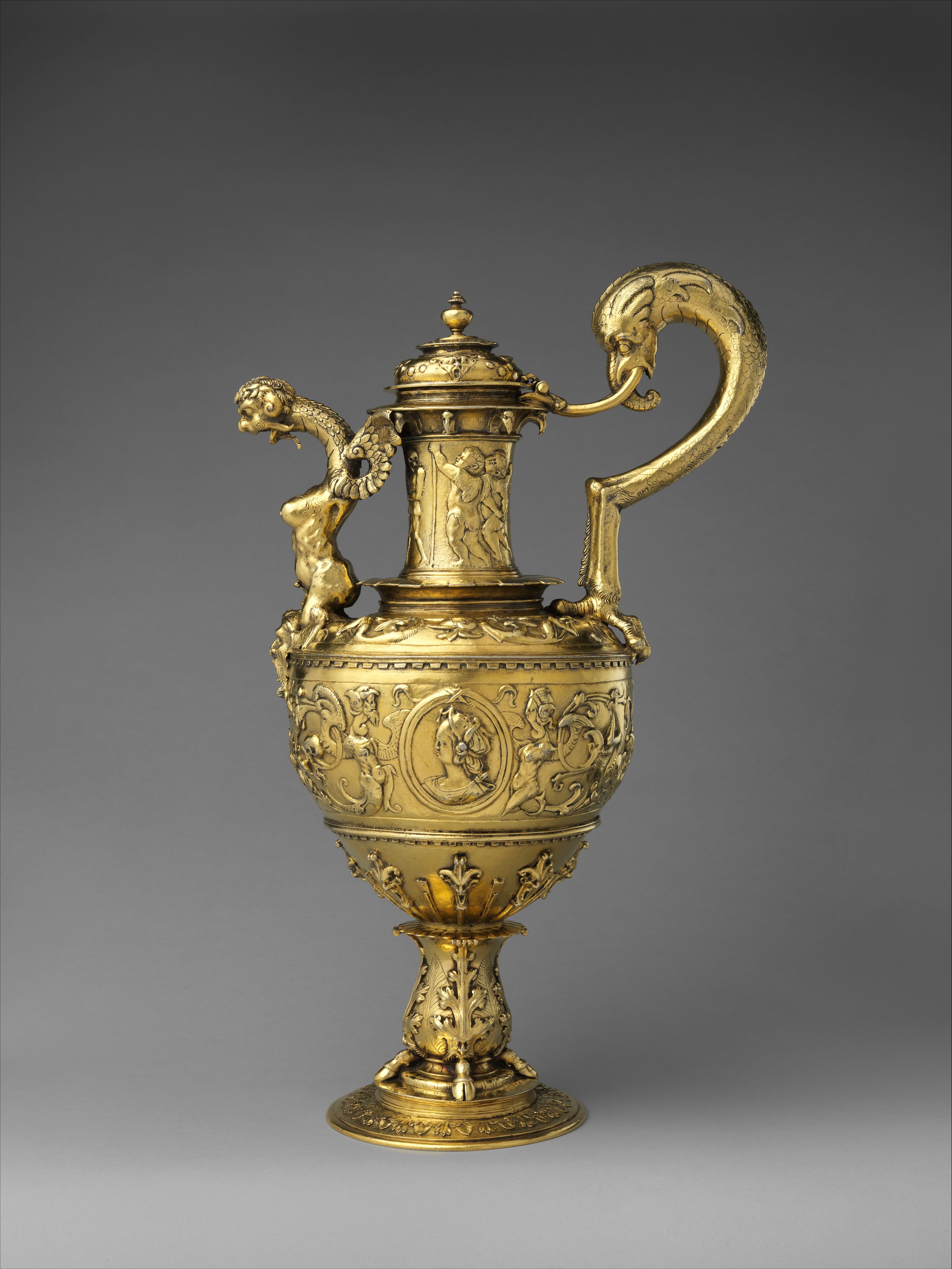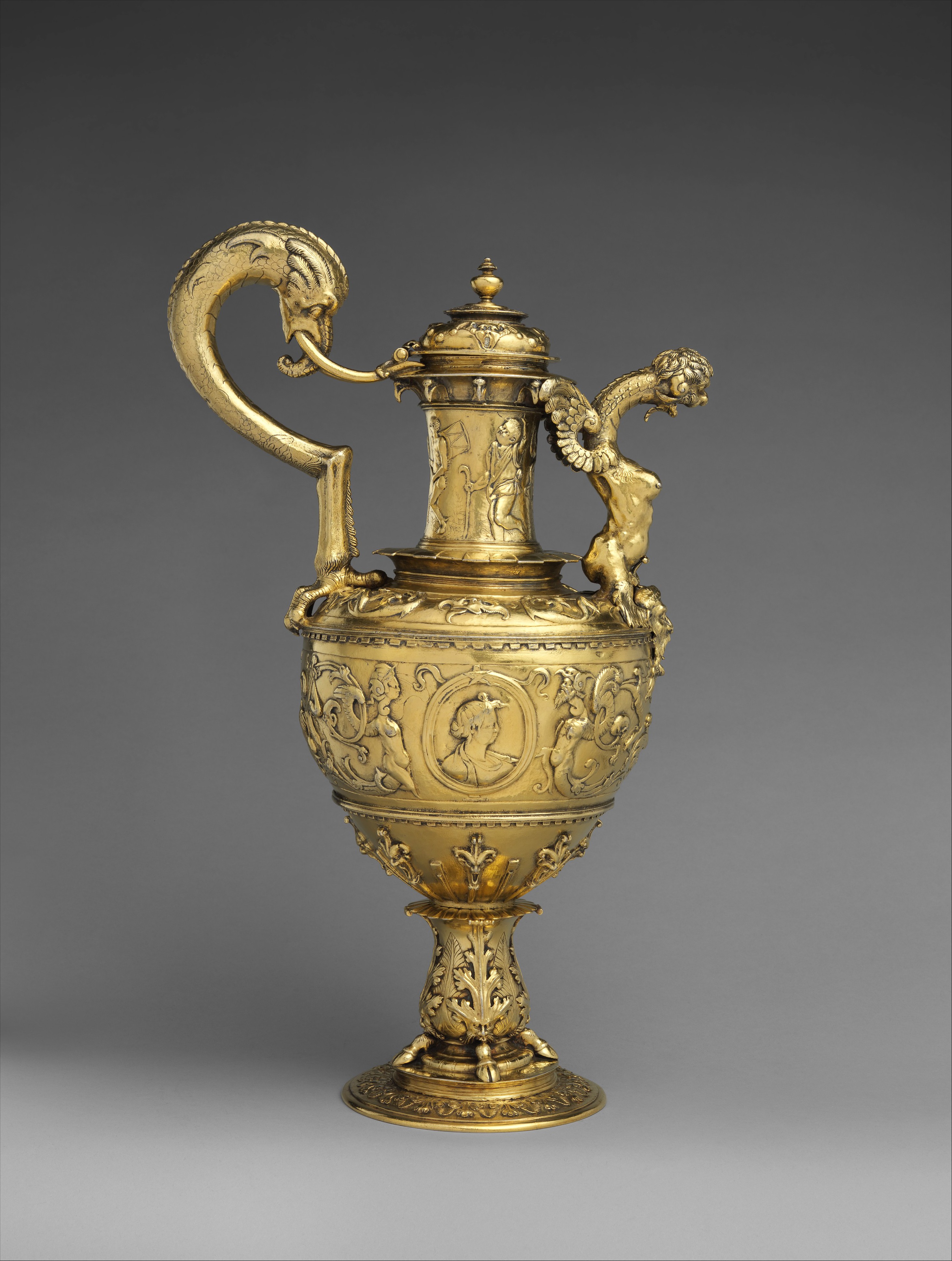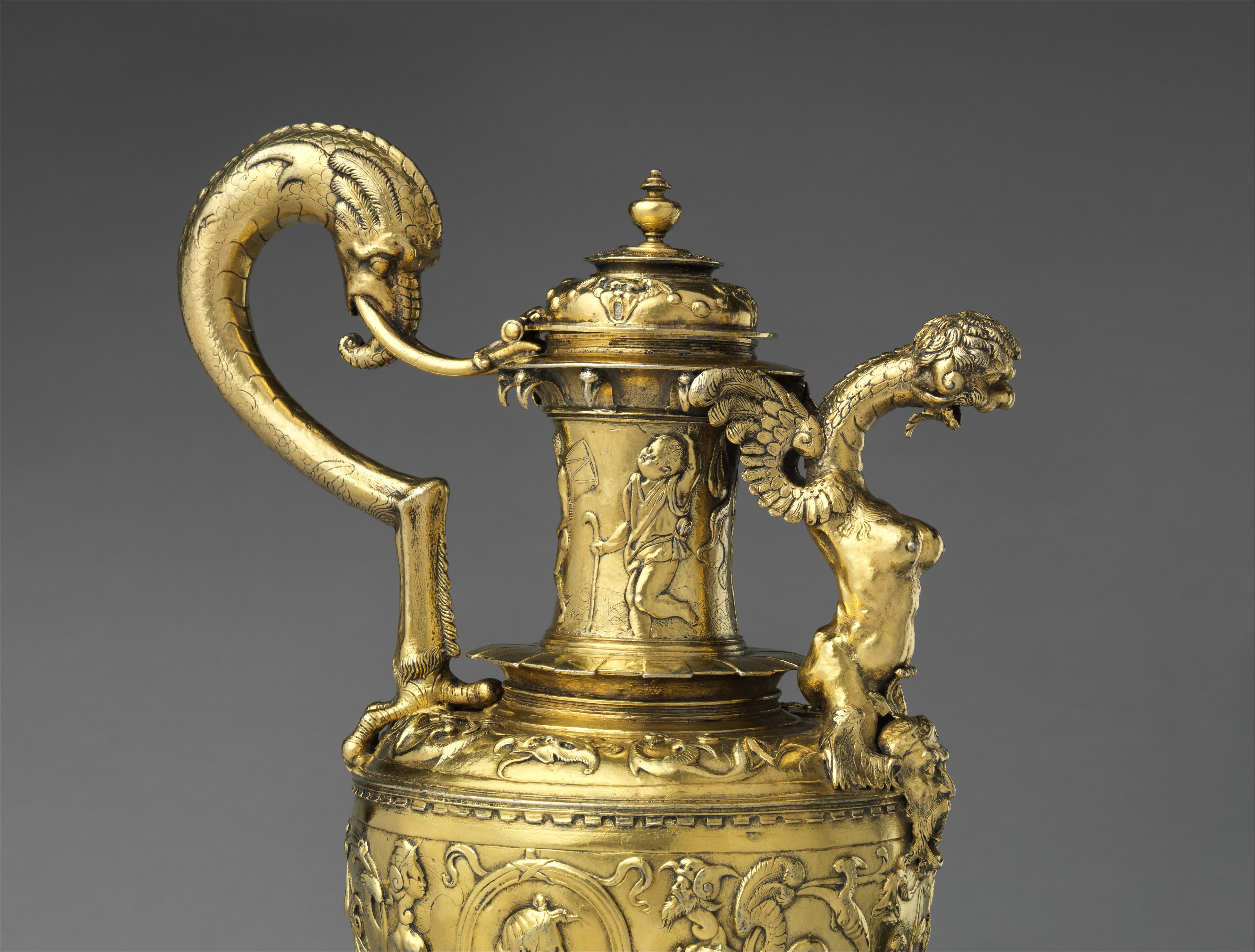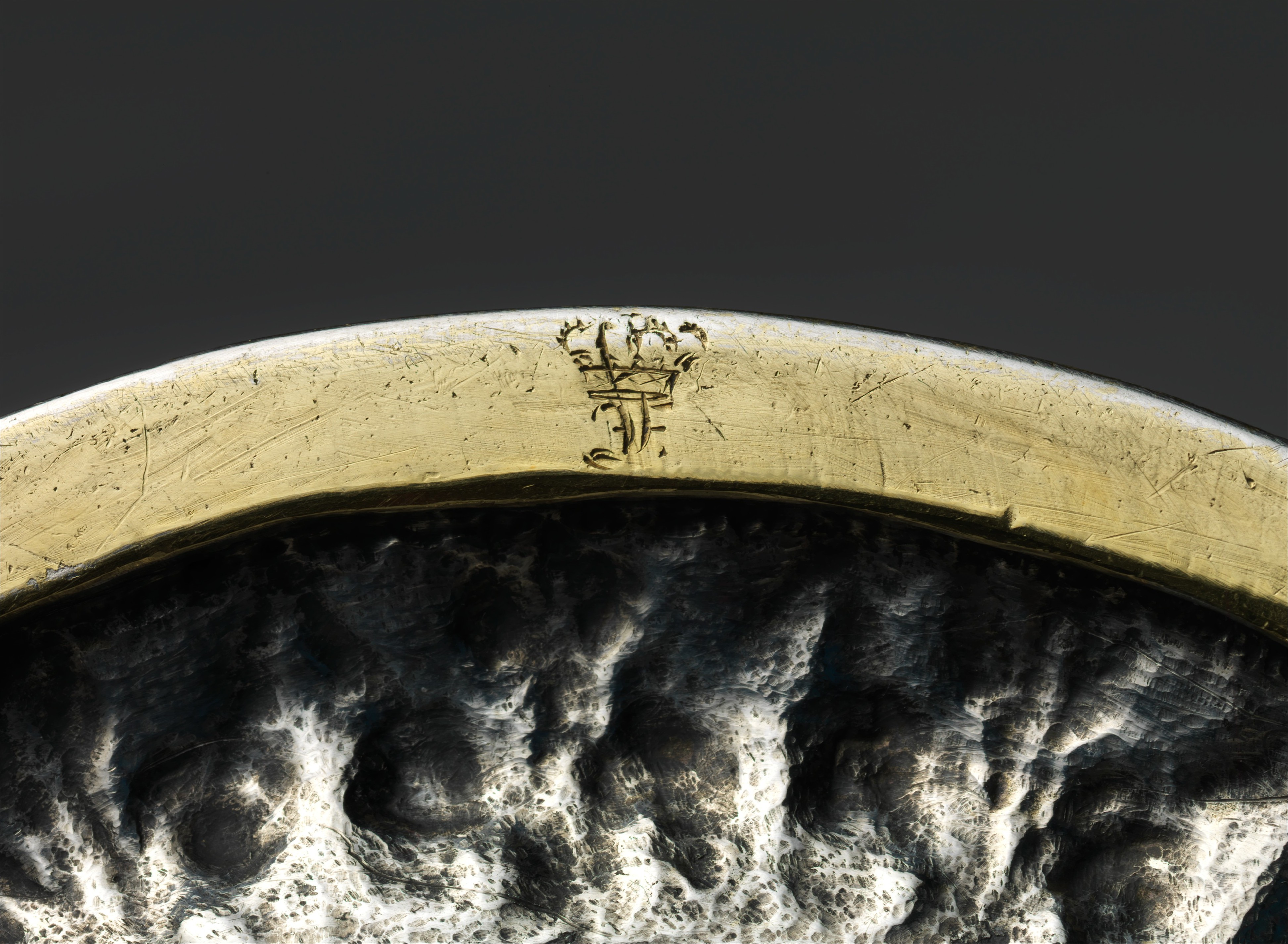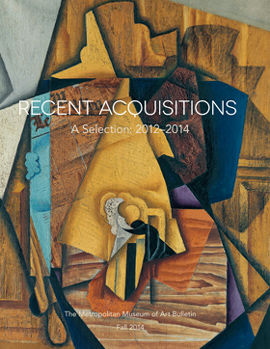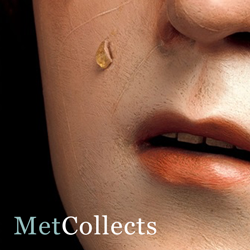Ceremonial ewer
The ewer exemplifies the individual interpretation of the Renaissance style in Portugal. Its daring juxtaposition of whimsical, exotic and macabre sculptural details attests to the commanding quality of Portuguese design. By combining the extravagant and the bizarre—fabulous beasts, mythological creatures and all too mortal humans, vanitas symbols of earthly fame, beauty and of inevitable death—it mirrors perfectly the period’s taste for the odd and the unexpected that was a result of the astonishing successes of Portuguese navigators’ voyages of discovery. Very likely a royal commission, the form of the ewer is rooted in the last phase of the Manueline style, named for King Manuel I (1469–1521) that combines details of flamboyant Late Gothic architecture, Italian, as well as Flemish, elements and even references to the decoration of East Indian temples. Among the king's favored diplomatic gifts were white elephants, venerated as divine in Asia, and here alluded to in the stylized handle.
Due to rights restrictions, this image cannot be enlarged, viewed at full screen, or downloaded.
This artwork is meant to be viewed from right to left. Scroll left to view more.


